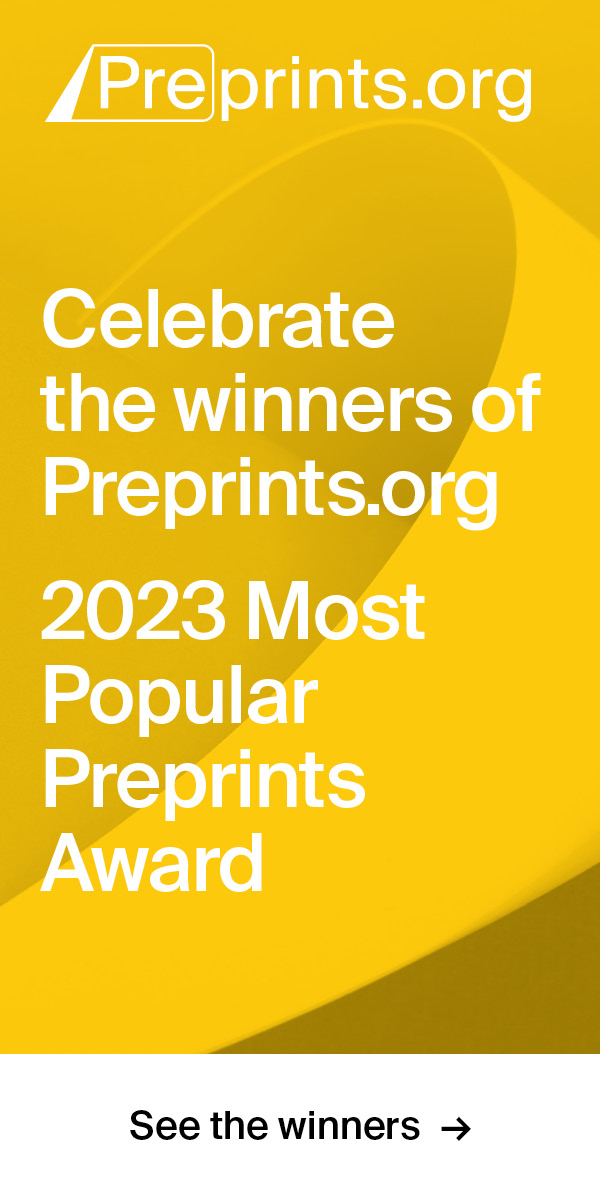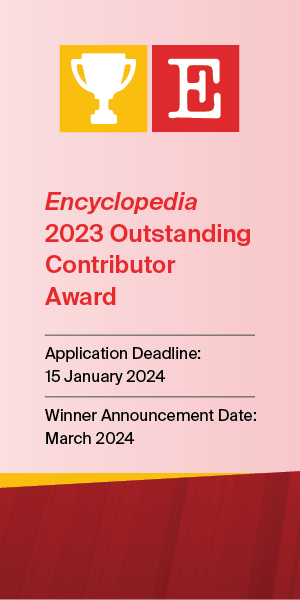The bibliometric analysis is a useful method when it comes to quantifying research outputs and when using the Scopus database. Using the bibliometric analysis method, this study aims to identify documents from the Scopus database that are most cited when doing a research study related to “objective risk” or “subjective risk”. Likewise, this study also adopted the use of the bibliometric analysis method in identifying the top 20 main sources of most cited documents, authors of most cited documents, and countries of most cited documents.
1. Introduction
Risk identification, assessment, and management play a critical role in many fields. Risk can be also categorized into several categories such as pure and speculative risk, fundamental and particular risk, priority and liability risk, operational risk, technical environment risk, information security risk, technical and architectural risk, and objective and subjective risk. Knight(1921) refers to objective risk as unalterable and subjective risk are alterable and malleable. On the other hand,Pfeffer(1956) argues that objective risk is a combination of hazards measured by probability while subjective risks are uncertainty that measured by a degree of belief, he also argued that risk is a state of the world, but uncertainty is a state of the mind, (An 2020;Houston 1964).
Objective and subjective risks are two opposite types of risks however they are connected by multiple variables. According toSuerdem et al.(2013), risks are possible outcomes of hazardous events. Based on the definition,Health and O’Hair(2009, p. 22) said that “objective risks” are risks that exist in reality whereas “subjective risks” are risks that are purely based on the judgment of other people. In general, the level of risk can be assessed or analyzed objectively or subjectively (BPP Learning Media
In practice, the focus of objective risk appraisal is to measure likelihood or probability including the impact of risk on people (BPP Learning Media 2014). For instance, objective risk measurement can be computed based on “frequency” or “magnitude” (Harris 2006, p. 129). Using subjective risk scales such as “high”, “medium”, and “low”, subjective risk appraisal is more focused on risk assessors’ knowledge and skills on factors that could influence the level of risk (Ettouney and Alampalli 2017, p. 31;BPP
When applied in business or other real-life social events, risk assessor(s) would compute for estimates or make a forecast on the outcome of objective risk but not subjective risk ( Suerdem et al. 2013;Rowe 1981). According toEttouney and Alampalli(2017), risk assessment is useful in guiding risk assessors on how to make optimal decisions. Depending on the risk evaluation outcome, the risk assessor could either accept or create strategies that will prevent or avoid the consequences of risk (Rowe 1981).
Using the bibliometric analysis method, this study aims to identify documents from the Scopus database that are most cited when doing a research study related to “objective risk” or “subjective risk”. Before the end of this study, the most used keywords including the clustering of commonly used keywords were analyzed in this study (Nobanee et al. 2021). Research output related to “objective risk” and “subjective risk” over the past 40 years was evaluated to provide a better understanding of the current situation of global research, current streams, and the direction of future research for this field (Wang et al. 2014). The analyzed characteristics covered not only the quantitative description of publications, such as most influential authors, most cited documents, leading countries, and organizations but also the authors’ and index keywords and their clusters to identify the sub-topics and current streams of “objective risk” and “subjective risk” research output.
The scope includes gathering documents straight from the Scopus database, narrowing down the search for related documents using the advance search option found in the Scopus database, listing down documents that are directly related to “objective risk” or “subjective risk”, listing down the top 20 most cited documents on “objective risk” or “subjective risk”, top 20 authors of documents on “objective risk” or “subjective risk”, top 20 countries where researchers could locate the most cited documents on “objective risk” or “subjective risk”, and top 20 commonly used keywords in documents that talks about “objective risk” or “subjective risk”. In general, the focus of this study is on “objective risk” or “subjective risk” only. Therefore, the bibliometric result of this study does not apply to other types of risk.
Aside from learning how to maximize the use of the Scopus database, this study will provide the readers with the opportunity to use VOSViewer in completing the bibliometric analysis. Overall, the result of this study will list down documents that are related to “objective risk” or “subjective risk”. Therefore, overall, this study could guide other researchers on the right way to locate documents on “objective risk” or “subjective risk”.
As part of helping future researchers on how to use the Scopus database, this report presented original work on how future researchers could benefit from using VOSViewer. Most existing documents on “objective risk” or “subjective risk” do not explain the benefits and limitations of doing bibliometric analysis. As such, the result of this study may contribute new ideas when searching for related literature on “objective risk” or “subjective risk”.
2. Top 20 Most Cited Documents
The top three (3) most cited document related to “objective risk” or “subjective risk” includes documents written by Acerbi, C. (n = 399, 20.2%) followed by Rozendaal, L. (n = 193, 9.8%), and Botzen, W.J.W. (n = 178, 9.0%). Table 1 summarizes the top 20 most cited documents on “objective risk” or “subjective risk” These papers are highly cited given that their citations exceed the average citations per document. (See Table 1—Top 20 Most Cited Documents on “objective risk” or “subjective risk”).
Table 1. Top 20 most cited documents on “objective risk” or “subjective risk”.
3. Top 20 Sources of Most Cited Document
The top three (3) sources of most cited document related to “objective risk” or “subjective risk” include Journal of Banking and Finance (
n = 399, 18.0%), Risk Analysis (
n = 252, 11.4%), and Ergonomics (
n = 211, 9.5%).
Table 2 summarizes the top 20 sources of most cited documents on “objective risk” or “subjective risk”. The topic of objective and subjective risk has been published by 160 sources, of which only 9.3 present more than one document on objective and subjective risk, relieving that very few sources are specialized at dealing with this field (
Izzo and Camminatiello 2020), (See
Table 2—Top 20 Sources of Most Cited Document on “objective risk” or “subjective risk” below).
Table 4. Top 20 sources of most cited document on “objective risk” or “subjective risk”.
| Rank |
Source |
CiteScore 2020 |
Citations |
Percentage (%) |
| 1 |
Journal of Banking and Finance |
4.4 |
399 |
18.0 |
| 2 |
Risk Analysis |
6 |
252 |
11.4 |
| 3 |
Ergonomics |
4.7 |
211 |
9.5 |
| 4 |
International Journal of Cancer |
10.1 |
193 |
8.7 |
| 5 |
Water Resources Research |
7.5 |
178 |
8.0 |
| 6 |
Archives of Surgery |
N.A. |
108 |
4.9 |
| 7 |
Journal of Risk Research |
4.3 |
94 |
4.2 |
| 8 |
Women’s Health (Hillsdale, N.J.) |
N.A. |
82 |
3.7 |
| 9 |
Health Psychology |
6.4 |
78 |
3.5 |
| 10 |
Neuropsychology Review |
10.6 |
67 |
3.0 |
| 11 |
Ecological Economics |
9.1 |
66 |
3.0 |
| 12 |
Cancer Epidemiology Biomarkers and Prevention |
6.8 |
65 |
2.9 |
| 13 |
Accident Analysis and Prevention |
7.8 |
64 |
2.9 |
| 14 |
Journal of Risk and Uncertainty |
3 |
64 |
2.9 |
| 15 |
Family Practice |
3.8 |
62 |
2.8 |
| 16 |
Journal of Financial Counseling and Planning |
2.1 |
59 |
2.7 |
| 17 |
Clinical Infectious Diseases |
13.2 |
51 |
2.3 |
| 18 |
Cognition and Emotion |
4.8 |
45 |
2.0 |
| 19 |
Frontiers in Psychology |
3.5 |
42 |
1.9 |
| 20 |
Energy |
11.5 |
35 |
1.6 |
| Total |
|
2215 |
100.0 |
4. Top 20 Authors of Related Documents
The top three (3) authors of related documents include: Acerbi, C. (
n = 399, 11.4%), Helmerhorst, Th.J.M. (
n = 192, 5.5%), and Kenemans, P. (
n = 192, 5.5%).
Table 3 summarizes the top 20 authors of related documents. Older documents have more citations than new documents, this will reduce the chance of newer articles being considered and this will affect the order of the top authors in the list (
Luther et al. 2020;
Van Oorschot et al. 2018). (See
Table 3—Top 20 Authors of Related Documents below).
Table 3. Top 20 authors of related documents.
| Rank |
Author |
h-Index |
Frequency |
Percentage (%) |
| 1 |
Acerbi C. |
5 |
399 |
11.4 |
| 2 |
Helmerhorst Th.J.M. |
51 |
193 |
5.5 |
| 3 |
Kenemans P. |
60 |
193 |
5.5 |
| 4 |
Meijer C.J.L.M. |
133 |
193 |
5.5 |
| 5 |
Rozendaal L. |
41 |
193 |
5.5 |
| 6 |
Van Ballegooijen M. |
53 |
193 |
5.5 |
| 7 |
Van Der Linden J.C. |
32 |
193 |
5.5 |
| 8 |
Voorhorst F.J. |
50 |
193 |
5.5 |
| 9 |
Walboomers J.M.M. |
60 |
193 |
5.5 |
| 10 |
Aerts J.C.J.H. |
53 |
178 |
5.1 |
| 11 |
Botzen W.J.W. |
14 |
178 |
5.1 |
| 12 |
Van Den Bergh J.C.J.M. |
54 |
178 |
5.1 |
| 13 |
Aiken L.S. |
95 |
160 |
4.6 |
| 14 |
West S.G. |
58 |
160 |
4.6 |
| 15 |
Summala H. |
40 |
153 |
4.4 |
| 16 |
Brand M. |
90 |
112 |
3.2 |
| 17 |
Schiebener J. |
11 |
111 |
3.2 |
| 18 |
Hoyt D.B. |
89 |
108 |
3.1 |
| 19 |
Mackersie R.C. |
109 |
108 |
3.1 |
| 20 |
Shackford S.R. |
|
108 |
3.1 |
| Total |
|
3497 |
100.0 |
5. Top 20 Countries of Related Documents
The top three (3) countries of related documents include: United States (n = 1009, 26.4%), Italy (n = 493, 12.9%), and Netherlands (n = 464, 12.2%). Table 4 summarizes the top 20 countries where the researcher can find related documents when using the Scopus database. (See Table 4—Top 20 Countries of Related Documents below).
Table 4. Top 20 countries of related documents.
| Rank |
Country |
Frequency |
Percentage (%) |
| 1 |
United States |
1009 |
26.4 |
| 2 |
Italy |
493 |
1.9 |
| 3 |
Netherlands |
464 |
12.2 |
| 4 |
United Kingdom |
338 |
8.9 |
| 5 |
Germany |
273 |
7.2 |
| 6 |
Sweden |
216 |
5.7 |
| 7 |
Spain |
182 |
4.8 |
| 8 |
China |
167 |
4.4 |
| 9 |
Finland |
165 |
4.3 |
| 10 |
Denmark |
119 |
3.1 |
| 11 |
Norway |
95 |
2.5 |
| 12 |
Australia |
81 |
2.1 |
| 13 |
Iran |
40 |
1.0 |
| 14 |
Greece |
33 |
0.9 |
| 15 |
New Zealand |
32 |
0.8 |
| 16 |
Switzerland |
31 |
0.8 |
| 17 |
Canada |
20 |
0.5 |
| 18 |
Israel |
20 |
0.5 |
| 19 |
France |
19 |
0.5 |
| 20 |
Kenya |
19 |
0.5 |
| Total |
3816 |
100.0 |
6. Top 20 Author-Supplied Keywords
Author-supplied keywords are keywords identified by the author of documents related to this topic (i.e., “objective risk” or “subjective risk”) (
Gordon 2019). As such, the Top 20 author-supplied keywords include: human (
n = 62, 11.6%), article (
n = 46, 8.6%), and humans (
n = 45, 8.4%).
Table 5 summarizes the top 20 author-supplied keywords in this study. (See
Table 5—Top 20 Author-Supplied Keywords below).
Table 5. Top 20 author-supplied keywords.
| Rank |
Keyword |
Occurrences |
Percentage (%) |
| 1 |
Human |
62 |
11.6 |
| 2 |
Article |
46 |
8.6 |
| 3 |
Humans |
45 |
8.4 |
| 4 |
Female |
42 |
7.9 |
| 5 |
Male |
32 |
6.0 |
| 6 |
Adult |
31 |
5.8 |
| 7 |
Decision making |
31 |
5.8 |
| 8 |
Priority journal |
29 |
5.4 |
| 9 |
Middle-aged |
27 |
5.0 |
| 10 |
Major clinical study |
25 |
4.7 |
| 11 |
Aged |
23 |
4.3 |
| 12 |
Risk |
23 |
4.3 |
| 13 |
Controlled study |
22 |
4.1 |
| 14 |
Objective risk |
21 |
3.9 |
| 15 |
Risk analysis |
20 |
3.7 |
| 16 |
Psychological aspect |
12 |
2.2 |
| 17 |
Attitude to health |
11 |
2.1 |
| 18 |
Multiobjective optimization |
11 |
2.1 |
| 19 |
Probability |
11 |
2.1 |
| 20 |
Perception |
11 |
2.1 |
| Total |
535 |
100.0 |
7. Conclusions and Recommendations
In conclusion, the use of ranking and descriptive statistics in the bibliometric analysis is not enough to show researchers an in-depth analysis of the available literature found in the Scopus database. To get a deeper insight as to how each related documents are linked to one another, it is necessary to create a visualization map using the VOSViewer software.
To narrow down the gap in existing literature, results found in VOSViewer would direct future researchers on what specific topic to write when it comes to “objective risk” or “subjective risk”. For example, a strong or thicker line that connects two items means that there is sufficient literature available on the subject matter. A weak or thinner line means that there is a research gap in the existing documents. For this reason, future researchers who wish to make studies on “objective risk” or “subjective risk” should locate subject areas with thinner lines.
Our research offers interesting insights on objective and subjective risk, nevertheless, like other studies, our paper is affected by some limitations. First, the search technique used in our study was restricted to” objective” or “subjective” risk within the titles, and keywords. However, some research might not refer to “objective” or “subjective” risk within the searching scope. Second, we rely only on documents published on sources that are listed in the Scopus database as it is considered the most dominant database of peer-reviewed articles, conference proceedings, and book chapters (
Khatib et al. 2021). Hence, the results of our search query may not cover all publications on “objective” or “subjective” risk. Future research may make a comparison of the outputs from multiple databases such as the Web of Science and Google Scholar. Third, we limited our research to documents that are written in English, some documents on “objective” or “subjective” that are written in other languages are not included in our analysis. Fourth, the top 20 most cited documents on “objective risk” or “subjective risk”, the top 20 authors of documents on “objective risk” or “subjective risk”, the top 20 countries where researchers could locate the most cited documents on “objective risk” or “subjective risk”, and the top 20 author-supplied keywords on subjects related to “objective risk” or “subjective risk” were analyzed in this study. Therefore, the result of this study does not completely represent what researchers can find when using the Scopus database. Therefore, future researchers should consider increasing the number of documents used for bibliometric and content analysis. Fifth, the “Matthew Effect” can also lead to biased findings when highly cited documents are blindly cited without checking their quality (
Luther et al. 2020;
Ball and Tunger 2005).
 Encyclopedia
Encyclopedia







